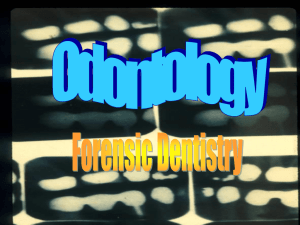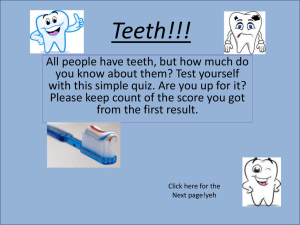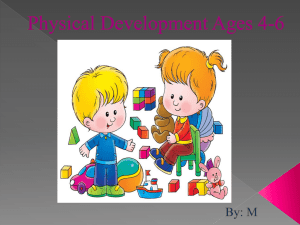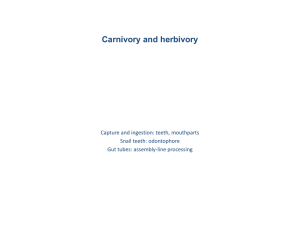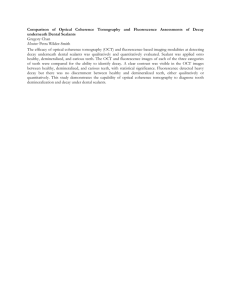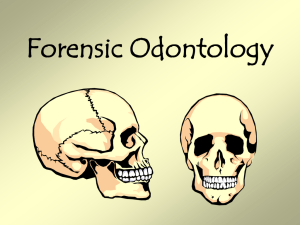FORENSIC ODONTOLOGY - Red Hook Central School District
advertisement
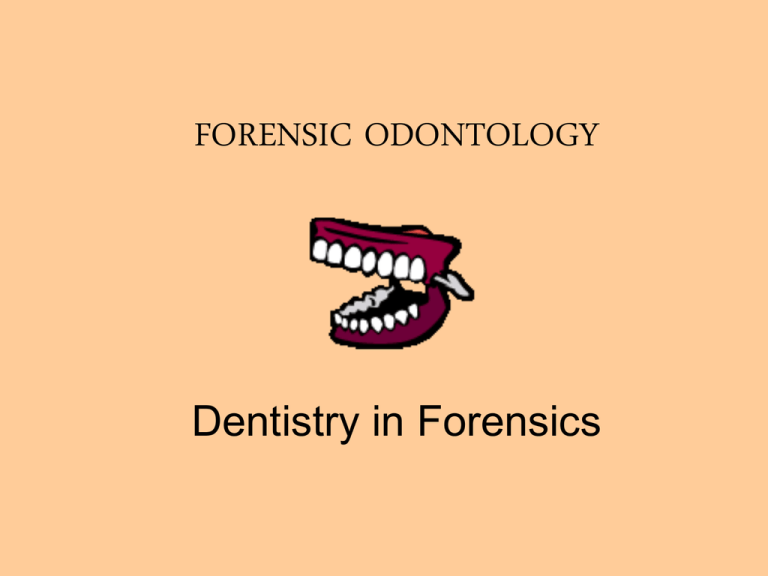
FORENSIC ODONTOLOGY Dentistry in Forensics How can teeth help investigators? • Identify a suspect by comparing bite mark evidence to the suspect’s teeth. • Identify a victim by comparing the teeth to the dental records of known missing people. BITE MARK EVIDENCE 1. Photograph the area with a ruler near the injury (in color and B&W). 2. Area is swabbed for traces of saliva (may contain DNA) 3. Area is swabbed for microorganisms 4. Impressions of the bite mark are made. Photographing the injury We have a suspect, now what? 1. Get the suspect’s permission for a body search. 2. Take saliva samples. 3. Photograph the teeth with a ruler in place for comparison. 4. Impressions are made of the teeth. Serial Killer Ted Bundy Impressions being made of Bundy’s teeth. Development of a child’s teeth can help estimate the age of a young victim. Dental Chart for humans The dark markings identify specific characteristics. Fillings, caps, chips, evidence of dental work Vet’s Dental Chart: Animal Bites Bite mark on a body Comparison of chimpanzee, A. afarensis, and human dentition Unique characteristics What Else can be Learned from Teeth? Dental Erosion- vomiting too much STAINING #1- from specific antibiotic use when teeth were developing STAINING #2- from smoking WORN TEETH #1- pipe smoker WORN TEETH #2- electrician (stripping wires with teeth) COUNTRY OF ORIGIN different dental practices TEETH: Note size and shape Teeth are important in Forensics! The End References • http://www.forensicdentalscience.com/ima ges/bundy1.jpg • James, Stuart H. and Nordby, Jon J. Forensic Science: An Introduction to Scientific and Investigative Techniques. CRC Press; Boca Raton, 2003. • Other Google images




